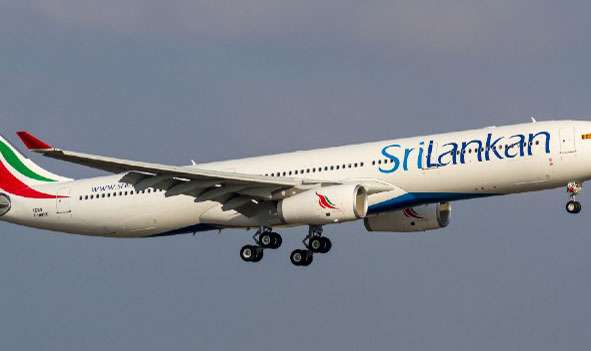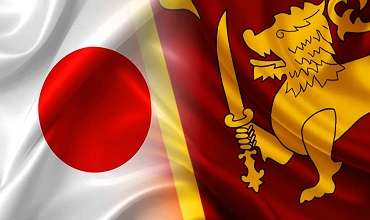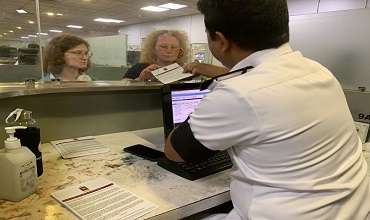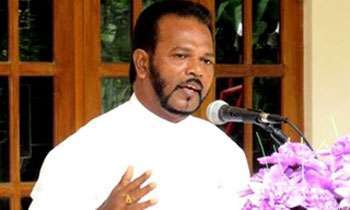No change in interest rates under SL’s latest monetary policy review
Sri Lanka’s Central Bank (CB) has maintained current interest rates with no change after its latest monetary policy review was announced early on Thursday.
The CB said in media release that its’ Monetary Board at a meeting held on October 13, decided to maintain the Standing Deposit Facility Rate (SDFR) and the Standing Lending Facility Rate (SLFR) of the CB at their current levels of 5 per cent and 6 per cent, respectively.
“The Board arrived at this decision after carefully considering the macroeconomic conditions and expected developments on the domestic and global fronts,” the statement said.
Here is the detailed statement:
The Board reiterated its commitment to maintaining inflation at the targeted levels over the medium term with appropriate measures, while supporting the economy to reach its potential in the period ahead.
The global economic recovery is expected to continue despite large disparities across countries. As per the World Economic Outlook (WEO) of the International Monetary Fund (IMF) released on 12 October 2021, the global economy is projected to grow by 5.9 percent in 2021 and 4.9 percent in 2022.
Economic prospects remain divergent across countries, mainly due to disparities in access to COVID-19 vaccines and policy support.
Consumer price inflation in most countries increased significantly, reflecting the impact of pandemic related supply-demand mismatches and the surge in commodity prices, compared to their low base from a year ago.
As per the estimates of the Department of Census and Statistics (DCS), the Sri Lankan economy witnessed a strong recovery during the second quarter of 2021, recording a real growth of 12.3 percent, year-on-year, following the growth of 4.3 percent, year-on-year, in the first quarter of 2021.
With the gradual return to normalcy after phasing out the COVID-19 related lockdown measures, alongside the successful rolling out of the COVID-19 vaccination programme and growth supportive policy measures, the momentum of economic activity is expected to sustain in the period ahead.
Available indicators and projections suggest that the real economy would grow by around 5 percent in 2021, and gradually traverse to a high and sustained growth trajectory over the medium term, following near-term stabilisation measures that are being put in place by the Government and the Central Bank.
The planned coordinated efforts by the Government and the Central Bank are expected to strengthen the external sector in the period ahead. Earnings from exports marked a notable improvement and recorded over US$1 billion for the third consecutive month in August 2021.
Expenditure on imports has also increased, partly reflecting the surge in global commodity prices, resulting in an expansion in the trade deficit during the eight months ending August 2021, over the corresponding period of last year.
The outlook for tourism improved with the easing of travel restrictions globally and the successful vaccination drive domestically. Despite the moderation of workers' remittances observed in recent months, a rebound is expected in the period ahead with the improved growth outlook for major foreign employment source countries and greater stability in the domestic foreign exchange market.
The realisation of foreign investments in the real sector and the timely adoption of remedial measures by the Central Bank as enunciated in ‘The Six-month Road Map for Ensuring Macroeconomic and Financial System Stability’ is gradually easing pressures in the domestic foreign exchange market.
Furthermore, the Central Bank continued to intervene in the foreign exchange market to provide liquidity for essential imports, including fuel.
The depreciation of the Sri Lankan rupee against the US dollar is recorded at 6.8 percent thus far in 2021.
The Sri Lankan rupee remains largely undervalued as reflected by the real effective exchange rate (REER) indices. In the meantime, gross official reserves were estimated at $2.6 billion by end September 2021.
This, however, does not include the bilateral currency swap facility with the People’s Bank of China (PBoC) of CNY 10 billion (equivalent to approximately $1.5 billion).
Gross official reserves are expected to improve with the measures that are being pursued by the Government and the Central Bank to attract fresh foreign exchange inflows, as outlined in the Six-month Road Map, thereby reinforcing the stability of the external sector in the period ahead.
Market interest rates have adjusted upwards in response to the tightening of monetary and liquidity conditions, while credit and monetary expansion remained elevated.
In response to the tightening of monetary policy in August 2021, most market deposit and lending rates have adjusted upwards.
Further, yields on government securities witnessed a sharp upward adjustment with the removal of maximum yield rates for acceptance at primary auctions. Following these upward adjustments, greater stability is expected in market interest rates in the period ahead. Reflecting the increased demand for credit amidst the low interest rate environment, credit extended to the private sector expanded as envisaged during the eight months ending August 2021.
The momentum of credit expansion is expected to continue during the remainder of the year, with the recovery in economic activity and continued efforts to channel credit flows to productive and needy sectors of the economy.
Meanwhile, credit obtained by the public sector from the banking system, particularly net credit to the Government, also increased notably during the eight months ending August 2021. With increased domestic credit, the growth of broad money (M2b) continued to remain elevated.
Some inflationary pressures are observed, particularly due to emerging global price developments. Inflation accelerated in recent months due to high food inflation and some acceleration in non-food inflation.
The surge in global commodity prices prompted the Government to remove maximum retail prices on several essential commodities.
Along with resultant upward adjustments in other market prices, this is likely to cause headline inflation to deviate somewhat from the targeted levels in the near term.
While such supply side developments in the near term do not warrant monetary policy tightening, measures already taken by the Central Bank in relation to interest rates and market liquidity would help stabilise demand pressures over the medium term.
Policy rates are maintained at current levels.
In consideration of the current and expected macroeconomic developments as highlighted above, the Monetary Board was of the view that the current level of policy interest rates is appropriate.
The Central Bank will continue to monitor domestic and global macroeconomic and financial market developments and stand ready to take appropriate measures, as and when necessary, with the aim of maintaining inflation in the desired range under the flexible inflation targeting framework in the medium term, while supporting and sustaining the economic recovery.
-
Still No Comments Posted.













Leave Comments